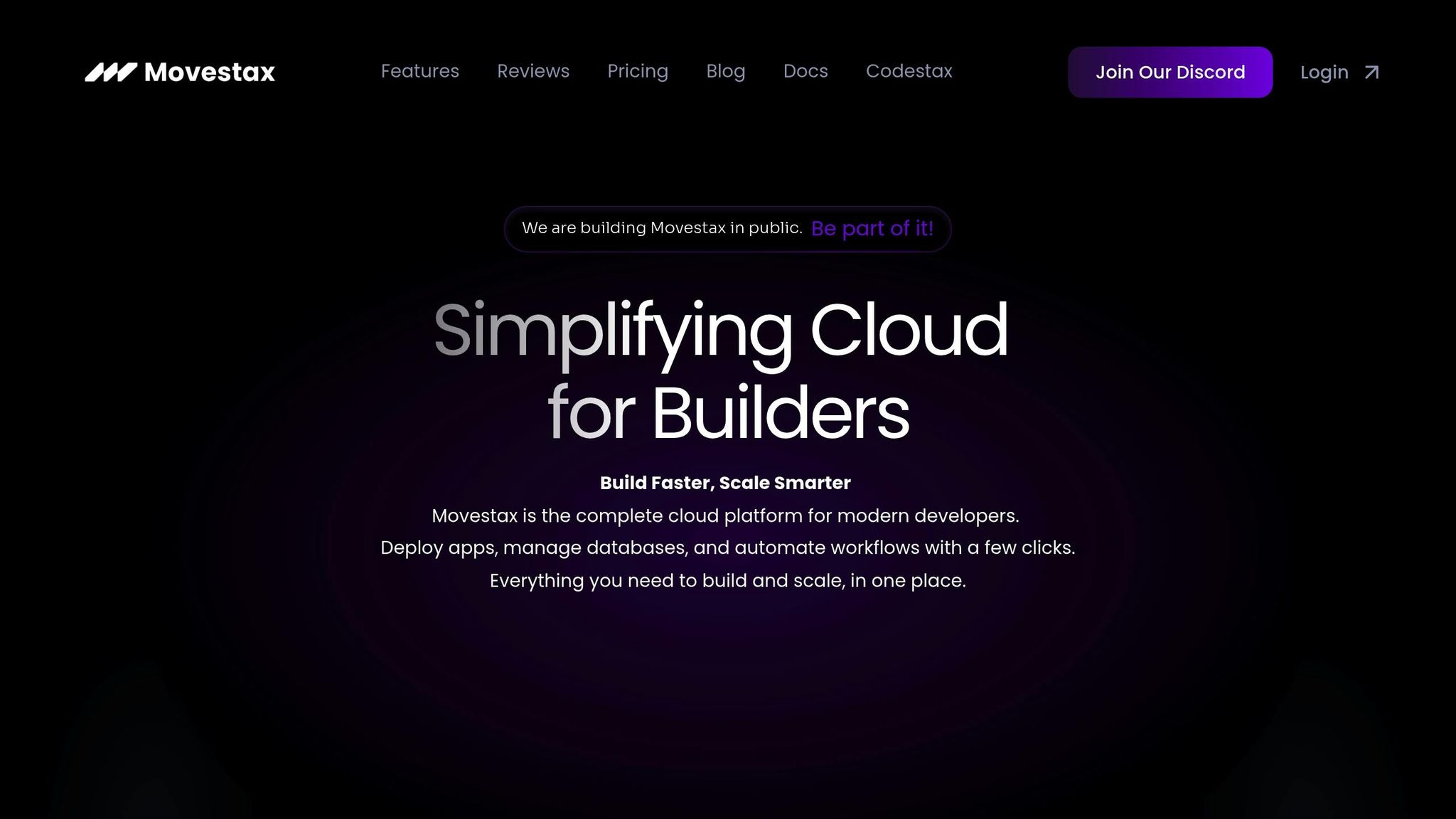Serverless databases simplify database management by automatically scaling resources and charging only for what you use. But to ensure reliability and control costs, tracking performance is essential. Here's what you need to focus on:
Key Metrics: Monitor response time, request processing speed, and system resource usage (CPU, memory, storage, and network).
Cost Management: Track scaling events, query costs, and storage usage to avoid unexpected expenses.
Tools: Use built-in monitoring tools like deployment logs or external solutions like query analyzers and load testers.
Optimization Tips: Improve query performance with indexing, caching, and efficient data structures. Manage connections with pooling and retry strategies.
Quick Tip: Platforms like Movestax offer built-in tools for monitoring and managing serverless databases like PostgreSQL, MongoDB, and Redis, making it easier to track these metrics and maintain performance.
This guide covers everything you need to measure, monitor, and optimize serverless database performance effectively.
Optimize price-performance using Azure SQL Database ...

Core Performance Metrics
Understanding key performance metrics is crucial for optimizing serverless database operations. Let’s break down the most important areas to focus on.
Response Time
Response time measures how quickly a database processes queries. Key factors include:
Query Latency: Time taken from sending a query to receiving results.
Cold Start Impact: Delays caused during initial scaling.
Connection Time: Time required to establish a database connection.
It's helpful to monitor both average response times and specific percentiles (like the 95th and 99th) to pinpoint performance issues. This also reveals how well your system handles multiple tasks at once.
Request Processing Speed
This metric highlights how effectively your database manages simultaneous requests. Important considerations are:
Throughput Rate: Number of successful operations per second.
Concurrent Connections: Maximum simultaneous connections supported.
Data Transfer Rate: Speed of moving data in and out of the database.
Platforms like Movestax ensure their serverless databases can handle fluctuating workloads with ease.
System Resource Usage
Keeping an eye on resource usage is essential for maintaining performance and controlling costs. Here's a quick breakdown:
Resource Type | Metric | Effect on Performance |
|---|---|---|
CPU | Utilization Percentage | Affects query execution speed |
Memory | Usage Percentage | Impacts system performance under load |
Storage | Read/Write IOPS | Determines input/output efficiency |
Network | Bandwidth Usage | Influences data transfer rates |
Cost Analysis
Balancing performance with cost is a key part of serverless operations. Metrics to track include:
Resource Scaling: Monitor when and why the database scales up or down.
Query Costs: Identify queries that use excessive resources.
Storage Usage: Keep an eye on data growth and its cost implications.
Movestax's serverless databases automatically adjust to demand, ensuring you only pay for resources during active use. This approach helps maintain a balance between efficiency and cost-effectiveness.
Performance Measurement Tools
Monitoring serverless database performance effectively involves using both platform-specific and external tools. Once you've identified key metrics, the next step is selecting tools that can track them in real time.
Platform Monitoring Tools
Movestax offers built-in monitoring tools with a unified interface, making it easier to manage serverless databases. One standout feature is its deployment logs, which assist in troubleshooting and debugging performance issues as they happen. These logs connect performance data across databases like PostgreSQL, MongoDB, and Redis. These native tools provide the essential visibility needed to measure the performance metrics discussed earlier.
External Monitoring Options
Beyond Movestax's integrated tools, external solutions can give more detailed insights. Here's a breakdown of common categories:
Tool Category | Main Function | Key Metrics Tracked |
|---|---|---|
Query Analyzers | Optimizing SQL performance | Query execution plans, index usage |
Load Testing Tools | Simulating heavy traffic | Concurrent connections, response times |
Log Aggregators | Analyzing logs | Error patterns, usage trends |
APM Solutions | Monitoring app performance | End-to-end transaction timing |
These tools can enhance monitoring efforts with features like custom alerts, trend analysis, and detailed reporting.
Custom Monitoring Setup
For a tailored approach, a custom monitoring system can be built to track metrics specific to your application. Key steps include:
Metric Collection: Gather data on query performance, resource usage, error rates, and connection pool status.
Data Storage: Use a time-series database to store historical data for trend analysis and capacity planning.
Visualization: Design dashboards to display real-time metrics, historical trends, and alert thresholds.
This combination of tools and strategies ensures thorough and efficient performance tracking.
Performance Improvement Methods
Boost the efficiency of serverless databases by focusing on reducing resource usage while maintaining high performance.
Query Performance Tips
To enhance database performance, consider these practical approaches:
Index fields that are frequently accessed.
Use caching for repetitive queries to reduce load.
Avoid "SELECT *" - instead, retrieve only the columns you need.
Break down complex queries into smaller, manageable operations.
For large datasets, materialized views can help cut down processing time by precomputing and storing query results.
Data Structure Planning
Properly organizing your data structures is key to maintaining consistent performance:
Structure Component | Performance Impact | Implementation Tip |
|---|---|---|
Indexing Strategy | Speeds up query execution | Focus on indexing columns used in filtering. |
Partitioning | Narrows query search scope | Divide tables by date or category. |
Normalization Level | Balances speed and storage | Use denormalization for read-heavy operations. |
Movestax's managed PostgreSQL and MongoDB solutions make it easier to apply these techniques, so you can concentrate on building your application instead of worrying about infrastructure.
Load Management
Use caching tools like Redis (available via Movestax) to handle frequently accessed data, session storage, and API responses.
Optimize connection pooling by fine-tuning pool sizes, timeouts, and retries to manage active connections efficiently.
Enable auto-scaling to dynamically adjust resources, ensuring smooth performance while keeping costs under control.
Common Performance Issues
When evaluating serverless database performance, teams often face challenges that can disrupt application reliability and user experience.
Infrastructure Monitoring Gaps
Monitoring can be tricky when infrastructure details are hidden. Here’s why:
Blackbox Infrastructure: The hardware and network layers are abstracted, making it hard to see what’s happening under the hood.
Dynamic Scaling: Performance tracking becomes inconsistent as resources scale up or down.
Limited Metrics Access: Some critical low-level metrics might not be available.
To address these gaps, focus on end-to-end metrics with platform tools:
Monitoring Aspect | Key Metrics | Measurement Approach |
|---|---|---|
Query Performance | Response time, execution speed | Measure at the application level |
Resource Usage | Memory, CPU utilization | Use platform monitoring tools |
Connection Health | Success rate, latency | Perform custom health checks |
Shared Resource Effects
In multi-tenant setups, workloads from other users can affect performance. Here’s how:
Resource Contention: CPU and memory availability can fluctuate based on overall platform demand.
I/O Performance: Storage and network throughput may vary with concurrent usage.
Query Planning: Execution plans might change because of shifting resource availability.
To mitigate these issues:
Add retry logic with exponential backoff to handle temporary slowdowns.
Set timeouts to prevent long-running queries from blocking other operations.
Use connection pooling to maintain steady database access patterns.
These shared resource effects can also complicate connection management, which we’ll tackle next.
Connection Issues
Managing connections in serverless environments comes with its own set of challenges:
Cold Starts: Increased query latency during initial connections.
Connection Limits: Scaling up serverless functions can hit database connection caps.
Timeout Handling: Long-running queries require proper timeout and cleanup strategies.
To reduce connection-related problems:
Strategy | Implementation | Benefit |
|---|---|---|
Connection Pooling | Use warm connection pools | Minimizes cold start delays |
Smart Retries | Apply backoff strategies | Handles temporary failures |
Health Checks | Test connections regularly | Avoids stale connections |
Conclusion
Key Takeaways
Monitoring serverless database performance means focusing on the right metrics and tools. Here’s what we covered:
Query Monitoring: Keeping an eye on query speeds and latency helps pinpoint bottlenecks early.
Resource Management: Tracking CPU, memory, and I/O usage ensures resources are allocated efficiently.
Connection Handling: Using proper pooling and retry strategies reduces the risk of disruptions.
Infrastructure Awareness: Knowing the limits of abstracted infrastructure improves monitoring strategies.
With the rise of serverless databases, the focus shifts to tracking end-to-end metrics instead of traditional infrastructure-based measurements. These insights tie directly into the solutions offered by Movestax.
Movestax Database Features

Movestax has earned praise for making performance monitoring simpler and more effective. It provides tools that directly address the challenges outlined above, streamlining database management.
Here’s how Movestax meets core performance needs:
Feature | What It Offers |
|---|---|
Instant Deployment | Quickly set up production-ready databases in seconds. |
Built-in Monitoring | Easily track performance metrics through a user-friendly interface. |
Multiple Database Support | Choose from PostgreSQL, MongoDB, or Redis to match your workload. |
Deployment Logs | Access detailed logs to debug performance issues fast. |
Laura Mitchell (@dbmaster) emphasizes Movestax’s strong PostgreSQL and MongoDB support, calling it her go-to platform for database management.







